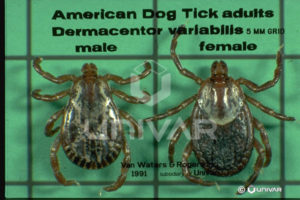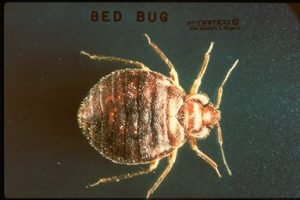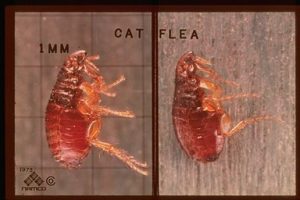
Identification: Ticks are brown to black or orange to red depending on sex and measure approximately 1/8”
Habits: Ticks spend most of their life at or near ground level where they wait on a suitable host to secure a blood meal. They are also found in tall grasses, weeds, bushes, shrubs, firewood, logs, fenceposts, and siding. They detect the presence of a vertebrate mammal through vibration, odor, and exhaled carbon dioxide and then climb or drop onto the host where they attach themselves.
Small, hard deer ticks are prevalent in areas where whitetail deer are located. Not to be confused with the large soft ticks that are found on dogs, this tick is responsible for transporting the disease organism that causes Lyme Disease. The prevalence of confirmed cases of this disease in recent years is thought to be connected to increasing deer numbers in urban areas. Concerns regarding the health risks and symptoms associated with this tick vector have caused many people to initiate tick management programs.
Control: When managing the tick population around the exterior of the house and yard it is best to take an integrated approach that includes both habitat modification and chemical application. For questions on Tick Management Techniques used by Monroe Pest Control please refer to the following link: Tick Management Practices













